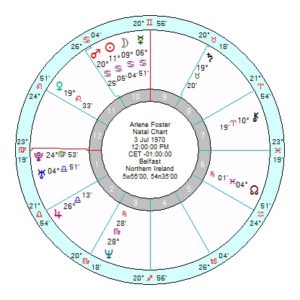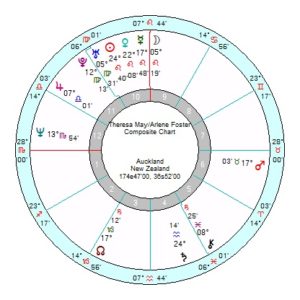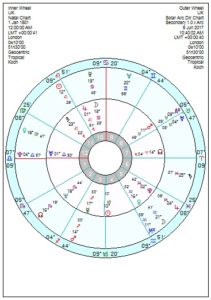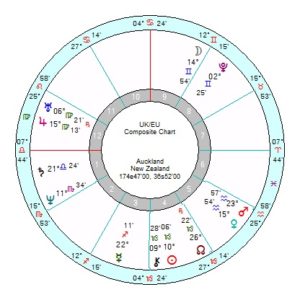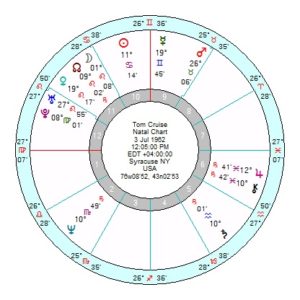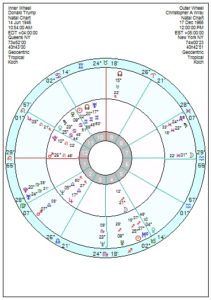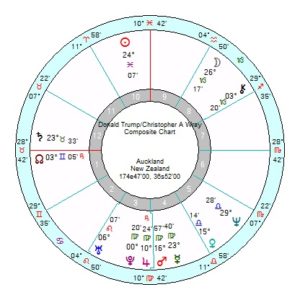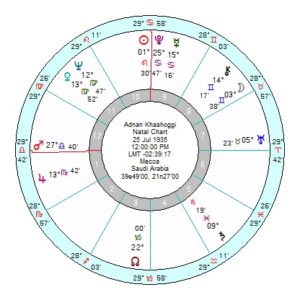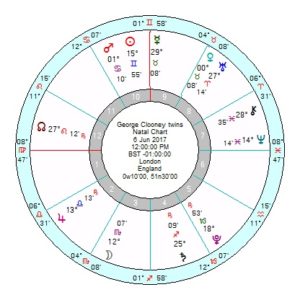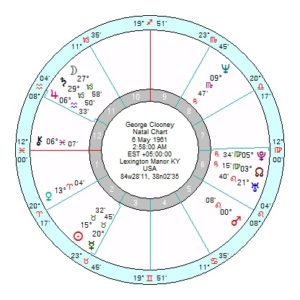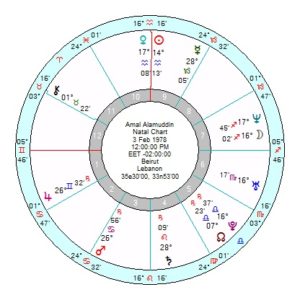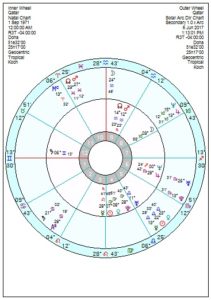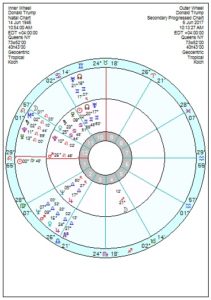
Trump now has his Progressed Moon moving into his 12th for two years and a confidant described him as a lost man: “He now lives within himself, which is a dangerous place for Donald Trump to be. I see him emotionally withdrawing. He’s gained weight. He doesn’t have anybody whom he trusts.” Which is fairly much a perfect description of that influence.
His ‘grown-up’ ministers spend their time patching up his wild statements, often contradicting what he’s said, for example on NATO, and wincing when he makes legal woes over his travel ban worse by giving hostages to fortune in inflammatory tweets about the recent London attack. And he’s now lashing out at Attorney General Jeff Sessions for not getting him what he wants.
His relationship with HR McMaster, who dented his previously stellar reputation by defending Trump’s over intelligence sharing with Russia, looks completely frustrated and aggravated at the moment with his boss, with tr Pluto opposition the composite Mars from early June through till mid July, and returning on an off till late 2018.
Jeff Sessions, Steve Mnuchin (Treasury Secy), Don McGahn (WH counsel) and Kellyanne Conway all have separating Saturn transits to their Trump relationship charts through till late 2017. As do the military chiefs – Mattis, Dunford, Kelly.
Even die-hard supporters like Stephen Miller and Gary Cohn look unnerved and jolted by strong tr Uranus hard aspects to their composite Suns.
Where problems may escalate is mid July to early September this year with tr Pluto square Trump’s Jupiter, which is likely to send him into an over forceful, might-makes-right push. And that returns in November. VP Mike Pence, Gary Cohn and Chief of Staff Dunford, look especially alarmed and confused in their interactions with him then.
Conflict and interpersonal difficulties are to be expected in the hothouse of the White House. But this one seems to beat all previous records.
Add on: Trump’s extraordinary twitter attack on Sadiq Khan, the London Mayor, is turning into a toxic ping pong match with Khan now saying he shouldn’t be invited to the UK.
Khan, born 8 October 1970, is a Sun Uranus in Libra; with a fearsomely determined Saturn in Taurus trine Mars Pluto in Virgo, and opposition Venus Neptune in Scorpio. Khan’s Saturn is conjunct Trump’s MC, so he could teach him to be more sensible and better organised but here Saturn’s critical, put-down side appears to be taking precedence. Plus Khan’s Mars Pluto squares Trump’s Sun and Moon; and Khan’s Neptune squares Trump’s Mars Ascendant – the first is bitterly hostile and the second not mutually supportive. Their relationship chart has similar patterns with a composite outright-dislike on both sides Pluto Mars conjunction bringing a determined and destructive power struggle ; with a differing-agendas composite Sun Uranus. And a chilly composite Venus square Saturn which is getting the deep freeze treatment this year from tr Saturn hard aspects.
The State visit won’t be Khan’s decision but with feelings running high I can’t imagine even the lure of HMQ and a gilded carriage ride down the Mall would be too attractive to Trump, given the reception he’s likely to get. Rex Tillerson got the bird pretty constantly on a recent visit to NZ and he’s not the kingpin.

